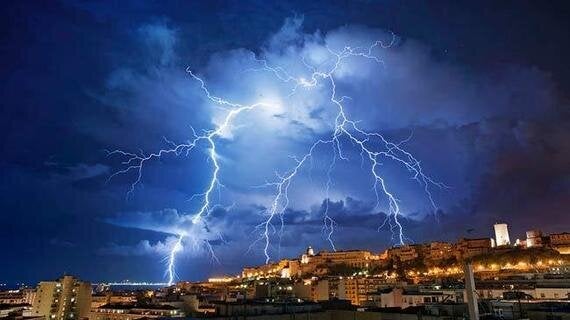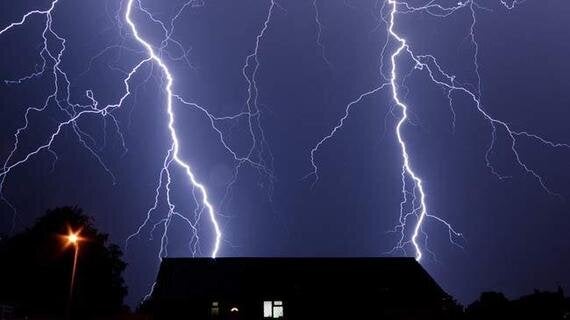We may dream about hot and sunny summer weather in the UK, but the truth is after a few days of heatwave conditions we can't wait for a good storm or two to clear the air.
Recently we've had some amazing thunderstorms, between 9am on Thursday 17 July and 9am on Monday 21 July 2014 the UK saw 62,277 lightning strikes, with over 36,000 of those strikes occurring in just 24 hours.
These were courtesy of a Spanish plume event, when very warm air pushes north from the Spanish plateau and meets cooler Atlantic air dragged in by cold fronts to our west. The result is the warm plume of air is forced to rise vigorously and this produces thunderstorms.
Storms are something we take for granted. After all, they are pretty common and can occur anywhere on the planet. Approximately 2000 thunderstorms are occurring at any given time around the world, with 100 lightning strikes every second and 8 million lightning strikes a day.
As well as clearing hot muggy air, lightning brings other benefits. It helps the Earth maintain electrical balance and makes ozone-producing chemicals.
But how much do you really know about thunderstorms? How does that cute little fluffy cumulus cloud turn into a big threatening thunderhead?
Thunderstorms and lightning

By definition, a thunderstorm is a storm with lightning and thunder, associated with a cumulonimbus cloud, which usually also produces gusty winds, heavy rain and sometimes hail.
The basic ingredients for a thunderstorm are fairly simple: moisture, rapidly-rising unstable air (air that will keep rising if given a nudge) and something to provide that nudge. This lift can come from weather fronts, sea breezes or mountains.
You can even get lift from the cool outflow of a thunderstorm, known as a gust front. This in turn causes the development of a new thunderstorm.
Because moisture and warmth are crucial to thunderstorms, they occur more often in the spring and summer, particularly in humid areas. They are most likely to happen during the afternoon and evening hours.
The most thundery part of the Earth is the island of Java, which averages about 220 thundery days a year. In comparison the UK gets between 5 and 20 thundery days each year, with the majority occurring during the summer over the east Midlands and parts of southeast England.
Life cycle of a storm
Cumulus clouds form when moist warm air rises, cools and condenses. If the updraught of warm air continues the cloud soon looks like a tower - hence the name towering cumulus. These are a heads up that storms are brewing.
There is little to no rain at this developing stage but you can get occasional lightning.
Our warm air will continue to rise until it has cooled to that of its surrounding environment, often at the tropopause (the boundary in the Earth's atmosphere between the troposphere and the stratosphere), which is 5 to 10 miles (30,000 to 50,000ft) above the ground.
Upper level winds fan out the cloud forming the classic anvil shape at the top of our cumulonimbus cloud.
We're now entering the mature stage of our storm when the updraught continues to feed it but the water vapour in the cloud has formed heavy enough water droplets that precipitation begins to fall and this creates a column of air pushing down.
This downdraught and rain-cooled air spreads out along the ground to form a gust front. It's at this stage we're most likely to get hail, heavy rain, frequent lightning, strong gusty winds and even tornadoes.
Eventually, the updraught is overcome by the downdraught and the storm begins to dissipate. The gust front cuts off the warm moist air that was feeding the thunderstorm, rainfall decreases but lightning remains a danger until the storm is all rained out and often all that's left is a wispy anvil high up in the sky.
Quick as a flash

This entire thunderstorm life cycle from growing cumulus cloud to dissipated storm takes an hour on average with less than 30 minutes of thunder and lightning. If it lasts longer then there is more than one storm cloud present.
Of course the reason we are interested in thunderstorms is the danger they present. As well as a lightning strike, they can produce intense rainfall, large hail and tornadoes.
The Birmingham tornado in 2005 and the Boscastle flood in 2004 were caused by thunderstorms. The aviation industry is also concerned about wind shear, turbulence and severe icing.
Next week it's all about the flash and the bang, plus how to work out how far away a storm is and the truth behind a bolt from the blue.